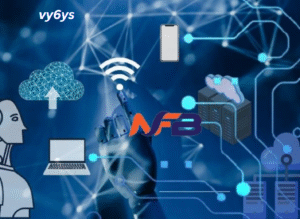Classroom 15x Revolutionizing Learning Through Innovation and Technology
The landscape of education has undergone a dramatic shift in recent years. With advancements in technology and growing awareness of diverse learning needs, traditional classroom models are increasingly being seen as outdated. Enter Classroom 15x, a revolutionary approach that blends pedagogy, innovation, and digital tools to supercharge the learning experience. Unlike conventional classrooms that focus on uniformity and standardization, Classroom 15x aims for exponential growth in learning outcomes—hence the “15x,” symbolizing a learning environment that is up to 15 times more effective, engaging, and adaptable.
In a world where knowledge evolves at lightning speed, the traditional one-size-fits-all education model is struggling to keep up. Students today are digital natives, accustomed to instant feedback, interactivity, and personalization. Classroom 15x addresses this demand by placing students at the center of their learning journey. By combining real-time data, adaptive learning technologies, and collaborative teaching methods, this model ensures every learner has a path tailored to their strengths and goals.
More than just a futuristic concept, Classroom 15x is already being piloted in schools and universities across the globe. Educators are seeing remarkable transformations—not just in test scores, but in student confidence, creativity, and critical thinking. This article will take a deep dive into what Classroom 15x is, how it works, and why it might be the most significant shift in education since the invention of the blackboard.
What is Classroom 15x
Classroom 15x is more than just a tech-savvy classroom; it’s an entire ecosystem designed to amplify learning outcomes through exponential strategies. At its core, it’s a data-driven, student-centered environment that embraces technology, personalization, and collaborative learning. The “15x” denotes the potential to make learning up to fifteen times more efficient and impactful by leveraging smart systems and modern teaching methodologies.
Unlike traditional classrooms, where students passively receive information, Classroom 15x transforms the learner into an active participant. Here, education is not confined by textbooks or rigid syllabi. Instead, students interact with content through dynamic platforms—augmented reality, gamification, AI-driven tutoring, and immersive simulations. This promotes deeper understanding, critical thinking, and the ability to apply knowledge in real-world scenarios.
Another defining characteristic is its flexibility. Classroom 15x adapts to each student’s pace, preferred learning style, and interests. Whether a learner thrives through visuals, audio, hands-on activities, or group discussions, the system adjusts accordingly. This is made possible by continuous feedback loops powered by learning management systems (LMS), which monitor progress and recommend next steps.
This model also challenges the conventional roles of educators. Teachers in a 15x environment act more as facilitators or learning coaches than mere transmitters of information. They guide, mentor, and inspire, while technology takes care of administrative tasks and personalized instruction. This evolution creates a dynamic, future-ready learning environment that’s poised to redefine education as we know it.
Key Features and Pillars of Classroom 15x
One of the most prominent features of Classroom 15x is technology integration. Unlike classrooms that use tech as a supplementary tool, this model places digital resources at the core of instruction. Smartboards, AI tutors, augmented and virtual reality tools, and cloud-based platforms are not just gadgets—they are active partners in delivering personalized education. These tools adapt to individual learning curves, offer real-time insights, and create immersive experiences that deepen understanding.
Personalized learning paths are another cornerstone. With AI-powered platforms, each student receives a tailor-made learning journey. These adaptive systems analyze performance data, identify strengths and weaknesses, and adjust content delivery to match each learner’s unique profile. This results in reduced frustration, increased motivation, and better retention of knowledge.
Classroom 15x also embraces project-based and experiential learning. Instead of focusing solely on memorization, students engage in meaningful, real-world projects. These could range from designing a sustainable city using simulation software to solving actual community issues. Such activities promote collaboration, critical thinking, and cross-disciplinary understanding—skills that are essential in today’s workforce.
Another vital component is data-driven teaching. Educators gain access to detailed analytics on student performance, which allows for timely interventions, curriculum adjustments, and customized support. Meanwhile, collaborative learning environments foster peer-to-peer interaction, encouraging students to learn from one another through discussions, debates, and team-based challenges. This combination of personalization and collaboration ensures a rich, engaging, and effective learning experience.
Implementation Strategies for Educators and Institutions

Transitioning to a Classroom 15x model requires thoughtful planning and strategic execution. The first step is to assess existing infrastructure and identify gaps in technology, training, and culture. Schools must invest in high-speed internet, devices for every student, and integrated platforms that can support adaptive learning. These foundational elements are crucial to delivering the 15x experience effectively.
Training educators is equally important. Professional development should go beyond basic tech skills—it must empower teachers to think differently about instruction. Workshops, peer mentoring, and certification programs can equip teachers with the mindset and tools needed to thrive in a 15x setting. Institutions can also partner with edtech companies for ongoing support and updates.
Funding is often a concern, but there are creative ways to secure resources. Public-private partnerships, government grants, and philanthropic donations can play a role in scaling this model. Moreover, the long-term ROI—improved student outcomes, reduced dropout rates, and better teacher retention—makes the investment worthwhile.
Resistance to change is natural, especially in traditional institutions. To overcome this, schools should involve all stakeholders—students, parents, teachers, and administrators—from the beginning. Clear communication, pilot programs, and showcasing early wins can build momentum. Case studies from early adopters, such as Finland’s tech-forward classrooms or Singapore’s Smart Nation initiative, offer blueprints for successful implementation and adaptation.
The Impact of Classroom 15x on Students and Educators
The most profound impact of Classroom 15x is on student engagement. When learners are given agency, interactive tools, and relevant content, they become more invested in their education. Studies show that students in adaptive and personalized learning environments demonstrate higher retention rates, better problem-solving skills, and more enthusiasm for learning.
Beyond academics, Classroom 15x fosters critical life skills. Students develop collaboration through team projects, communication through presentations, creativity through open-ended assignments, and critical thinking through complex problem-solving. These 21st-century competencies are crucial in preparing them for a rapidly changing world.
For educators, the shift can be equally rewarding. Teachers are no longer burdened with repetitive grading and static lesson plans. Instead, they focus on mentorship, creativity, and relationship-building. They gain better insight into each student’s progress, enabling more targeted and meaningful support. This shift enhances job satisfaction and opens new career development pathways in instructional design and educational leadership.
Emotionally and socially, Classroom 15x promotes inclusivity. With differentiated instruction and real-time support, students with learning differences, language barriers, or emotional challenges receive the attention they need. The sense of belonging and personalized attention leads to stronger mental well-being and academic confidence.
Challenges and Criticisms of Classroom 15x
Despite its many benefits, Classroom 15x is not without challenges. The digital divide remains a significant hurdle, especially in underserved communities. Without access to reliable internet or modern devices, some students may be left behind, deepening existing educational inequalities.
Data privacy and security are also pressing concerns. With the integration of AI and analytics, vast amounts of student data are collected and stored. Institutions must ensure stringent protocols are in place to safeguard this information and comply with regulations like GDPR or FERPA.
Critics also warn against over-reliance on technology. While digital tools are powerful, they must not replace human interaction, empathy, and the nuanced understanding that only educators can provide. Balance is essential to ensure students don’t become overly dependent on screens or algorithms.
Lastly, the need for continuous professional development can be overwhelming. Teachers must stay updated with fast-evolving tools and pedagogies, which can lead to burnout if not managed properly. Administrators must prioritize teacher well-being and provide ample support structures to navigate this transition.
Conclusion
Classroom 15x represents the future of education—personalized, data-driven, collaborative, and deeply engaging. It answers the urgent call for reform in an era where students require more than rote learning to succeed. By embracing innovation, empowering teachers, and focusing on the holistic development of learners, this model reimagines what education can and should be.
The journey toward Classroom 15x is not without obstacles, but the potential rewards far outweigh the challenges. Schools and educators willing to take the leap stand to create learning environments that truly prepare students for the complexities of the modern world. It’s time to move beyond incremental changes and embrace exponential transformation.
FAQs
What does the “15x” in Classroom 15x stand for?
It symbolizes the potential to make learning 15 times more effective through technology, personalization, and innovation.
Is Classroom 15x suitable for all grade levels?
Yes, it can be adapted for primary, secondary, and higher education, though implementation strategies may differ.
How expensive is it to implement a Classroom 15x model?
Costs vary but can be offset through grants, partnerships, and phased integration of tools and training.
Do students need to be tech-savvy to benefit from Classroom 15x?
Not necessarily. Systems are designed to be intuitive, and students often receive support to build digital literacy.
How can teachers get trained for a Classroom 15x setup?
Many organizations offer certifications, workshops, and online courses tailored to innovative teaching practices.
You May Also Read: https://otswroldtime.com/continue-reading/














Post Comment